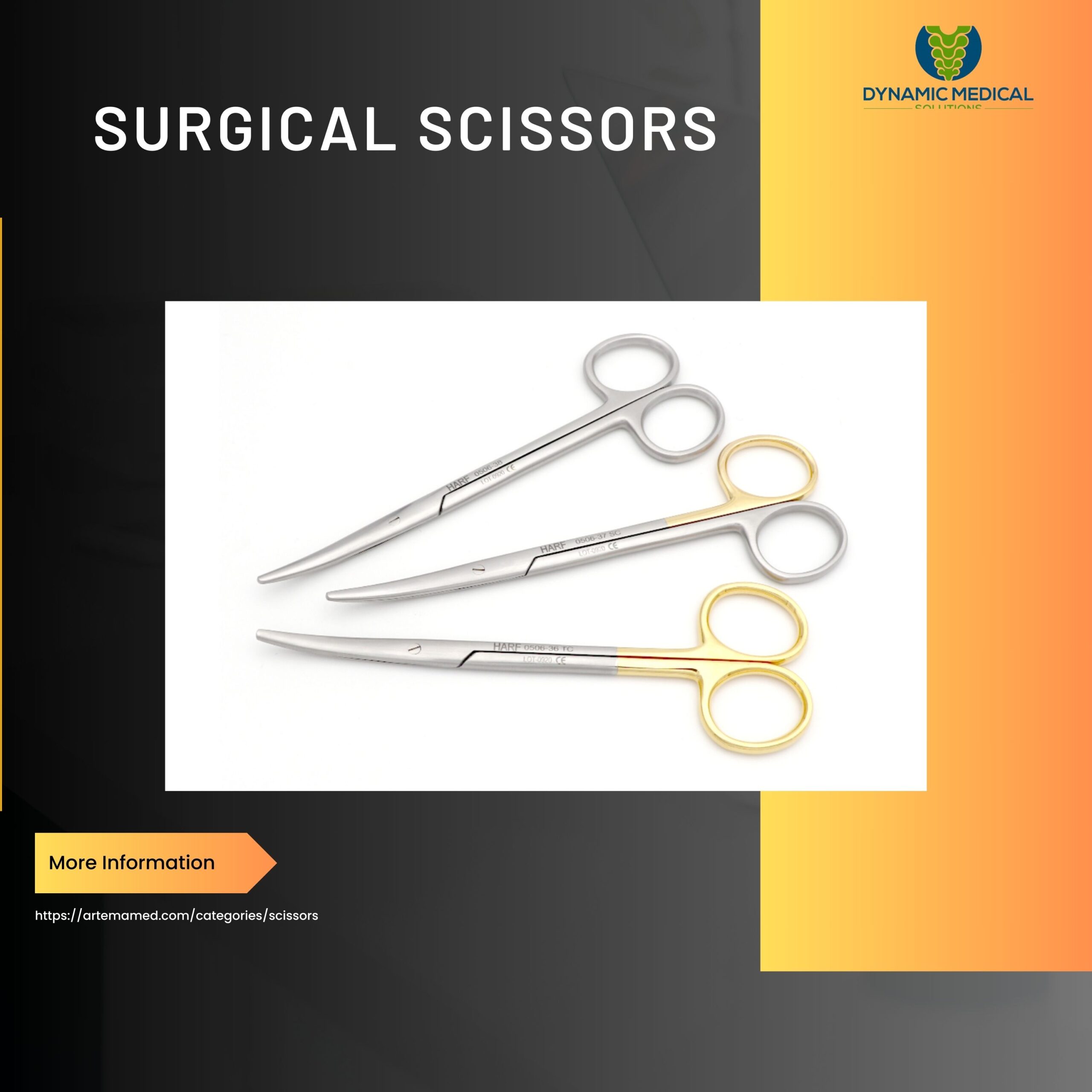
Surgical scissors are specialized tools used to cut, dilate, or constrict body tissues and other materials during operations. They are carefully designed to ensure precision and control with minimal tissue damage. They are different from one another in their shape, design, size, and functionality.
Surgical instruments have been classified into different categories to better understand their function. Surgical scissors are those instruments that belong to the category of cutting and dissecting. As the name suggests, they are only used for dissection, incision, and excision of different body tissues. In this blog, we will discuss various kinds of surgical scissors with their features and functions.
Types of Surgical Scissors
1. Operating Scissors
2. Mayo Scissors
3. Dissecting Scissors
4. Metzenbaum Scissors
5. Bandage Scissors
6. Wire Scissors
7. Endoscopic Scissors
8. Micro Scissors
9. Diethrich Scissors
10. Uterine Scissors
11. Iris Scissors
12. Strabismus Scissors
13. Ballute Scissors
14. Cottle Angular Scissors
15. Joseph Scissors
16. Potts Scissors
17. Hysteroscope Scissors
18. Corneal Scissors
19. Tenotomy Scissors
20. Suture Scissors
21. Enucleation Scissors
22. Caplan Scissors
Mayo Scissors
Mayo scissors are also known as Surgical Suture Scissors. They are heavy with straight blades. They are used for cutting sutures. Surgeons use the tips of these scissors for cutting sutures. They can also rotate the scissors for a clear view. They are strictly limited to cutting only tissues to avoid dulling the blades. Curved mayo scissors are also known as heavy tissue scissors.
Metzenbaum Scissors
Metzenbaum scissors are also known as tissue scissors or Metz scissors. They are long and thin. Their blades may be straight or curved, with blunt or sharp tips. They are used for the dissection of delicate tissues. They should be intended to dissect tissues only; otherwise, the blades become rough and cannot function properly.
Bandage Scissors
Bandage scissors are angled with blunt ends and a flattened tip. They are used to cut dressings and drapes, and they are also used in cesarean sections during the delivery of the baby. The flattened tip is specially designed to get under the dressings without harming the patients.
Micro Scissors
Micro Scissors are named so because they are used for the microdissection of tissues. They are very fine, spring-oriented scissors. They may be curved or straight. Some Micro Scissors are bayonet-shaped, known as micro bayonet scissors. They are specially designed for users who want to see beyond their fingers during the procedures.
Diethrich Scissors
Diethrich scissors are also known as duck scissors. They are angled and are available in a variety of angles. The blades are very sharp, and the handle has a stabilizing bar. They are used to open or dilate a blocked artery or vein.
Uterine Scissors
Uterine scissors are heavy scissors with a considerable length. Their blades may be straight or curved. The straight one is used for cutting sutures, while the curved one is used for cutting tissues. As the name suggests, they are used in the treatment of hysterectomy for dissecting heavy uterine vessels.
Strabismus Scissors
Strabismus scissors are pediatric scissors with blunt tips. Their blades may be straight or curved. They are specially designed for the dissection of medial and lateral body muscles to strengthen or weaken them.
Iris Scissors
Iris scissors are also pediatric scissors with sharp tips. Their blades may be straight or curved. They are specially designed for the dissection of the iris. Iris scissors with oval fingertip pads are known as Barraquer iris scissors.
Bellucci Scissors
Bellucci scissors are also known as middle-ear scissors. They are very small, with finger rings. They are known for the delicacy of their working tips. Their function is to cut tissues in the middle ear.
Cottle Angular Scissors
Cottle angular scissors are also known as turbinate scissors and posterior scissors. They are lengthy and narrow, with blunt blades. They are used for the dissection of the mucosal tissue in the nose. They are available in both small and medium sizes.
Joseph Scissors
Joseph scissors are very small scissors, specially designed for the dissection of fine tissues. Their blades are curved with sharp points. They are known for their delicacy and are always handled with care.
Caution
The scissors should be regularly inspected for any kind of nick or burr, as they will not enable smooth cutting of the tissues. Moreover, the screw should be tightened properly to prevent it from dropping into the wound, and the scissors with sharp pointed ends should be wrapped properly with great care to avoid any kind of tissue damage.
Conclusion
Surgical scissors are versatile instruments that belong to the category of cutting and dissecting. All of them are collectively used for the same purpose of dissecting body tissues but for different parts of the body at different locations. They are exclusively designed based on the type and location of the part on which they are performing. They differ in size, shape, and design.
Please visit our website Artema Medical for more information.